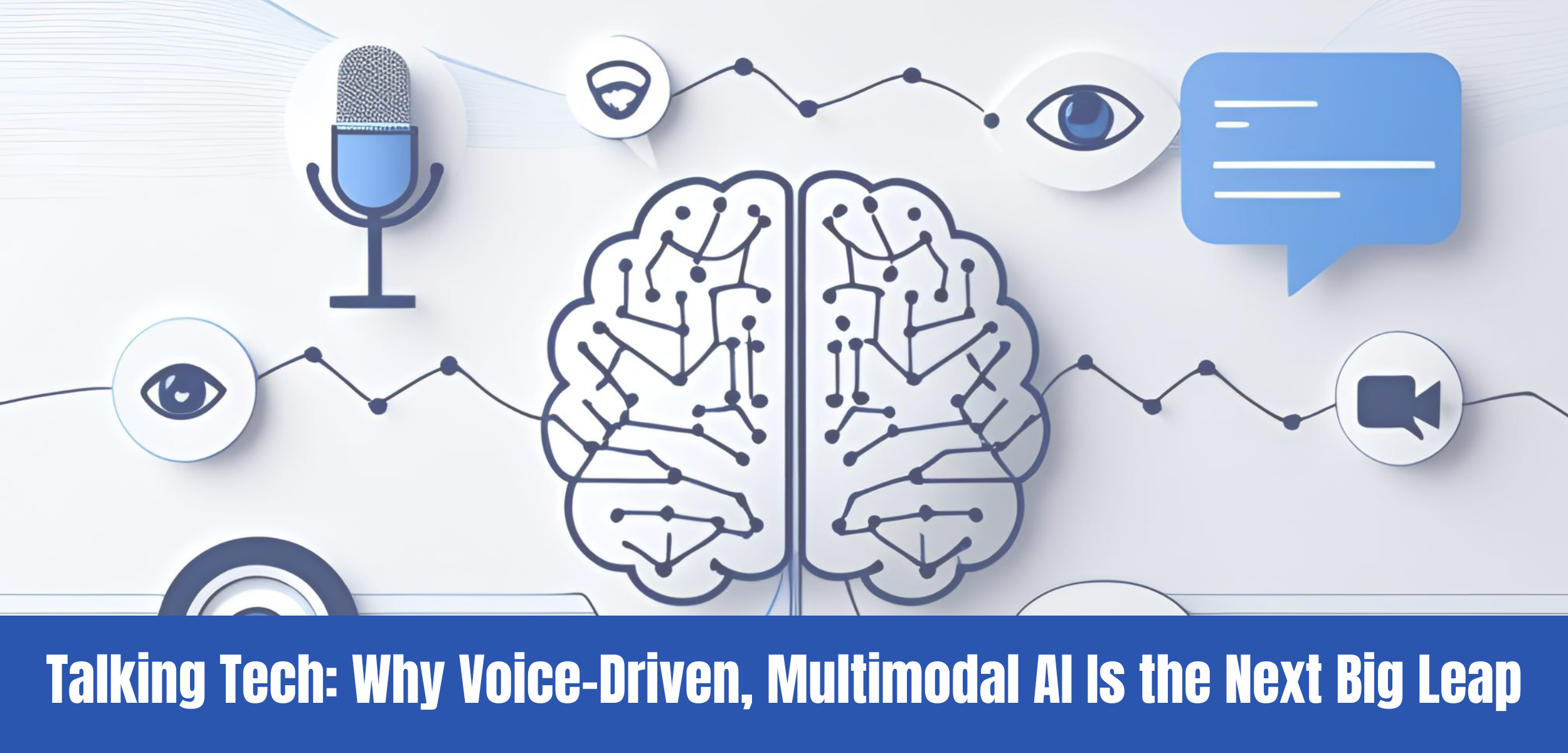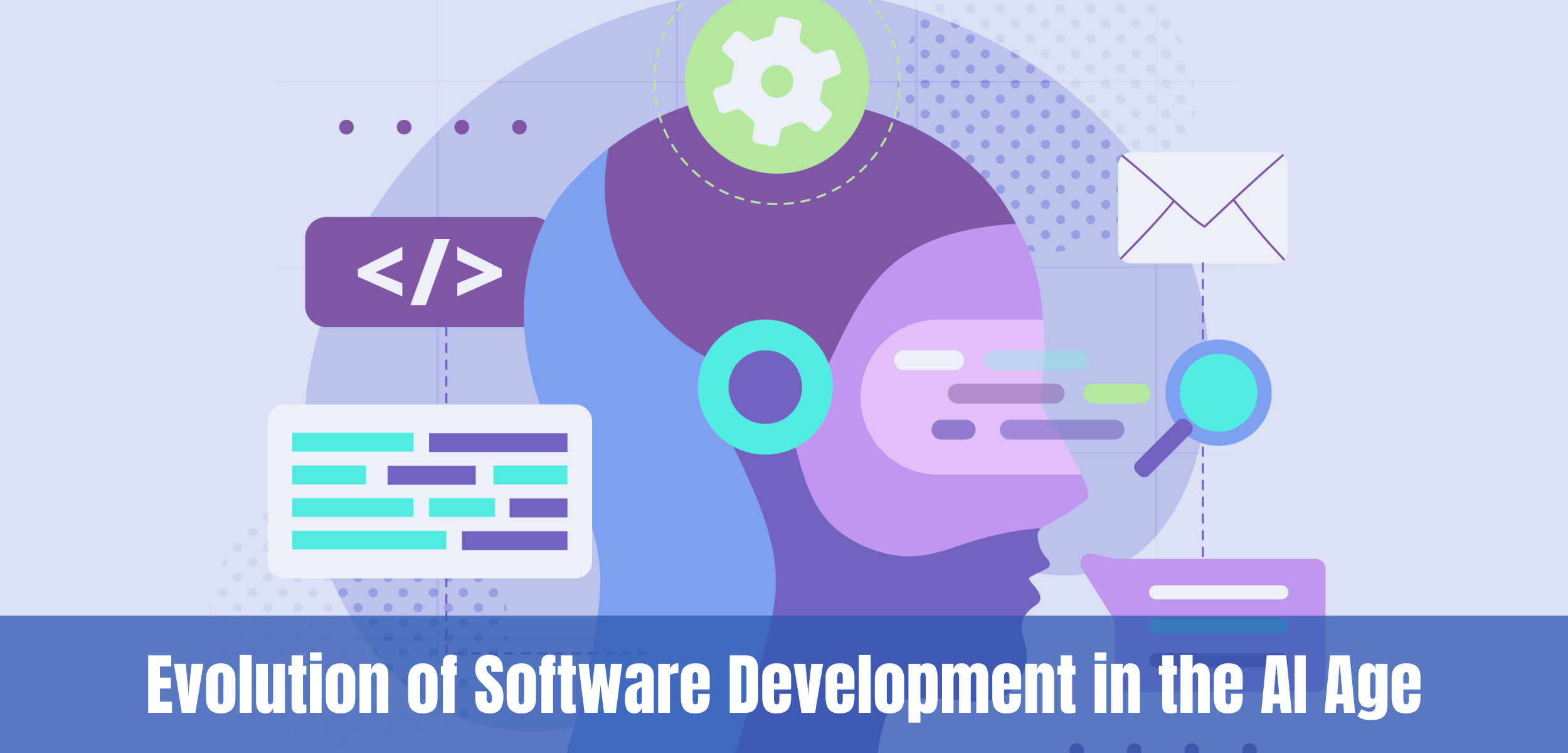For decades, we’ve adapted ourselves to the way machines work. We learned their rules, remembered their shortcuts, and tolerated their quirks. Even the rise of chatbots billed as conversational still forced us to operate within the confines of a text box.
That era is fast changing.
.Voice-driven, multimodal AI is shifting the dynamic. Instead of us adapting to technology, technology is adapting to us. We can speak, gesture, show, and combine all of these modes in a single interaction. The system listens, sees, interprets, and responds as naturally as a human colleague might.
This change is more than cosmetic. It represents a structural shift in how people will interact with information and make decisions in the years ahead.
From Commands to Context
The history of computing is a steady march toward accessibility. In the beginning, there was the command line: exact syntax, unforgiving rules. The 1980s brought graphical interfaces, allowing users to navigate visually rather than memorize codes. Touchscreens lowered the barrier further, letting us interact directly with what was on the screen.
Voice assistants seemed like the next logical leap, but they came with limitations. They could hear you, but not see what you were referring to. They could answer questions, but only within narrowly defined parameters.
The breakthrough we’re seeing now comes from convergence. Speech recognition has become accurate in noisy, real-world settings. Computer vision can interpret complex scenes and expressions. Large language models can weave together inputs from multiple sources into a single, coherent understanding. The result is AI that can follow a conversation across different modes without losing context, much like a person does.
Why It Matters for Business
For leaders, the implications go well beyond novelty. This is about speed, clarity, and reach.
In complex operations, multimodal AI cuts steps out of workflows. You can explain a process, point to data, and get an integrated response in seconds. That means faster decisions and fewer misunderstandings.
Accessibility is another driver. Voice-driven, multimodal systems are inclusive by design, opening the door for people with physical, cognitive, or linguistic challenges to participate more fully in work and services.
And then there’s engagement. The more natural the interface, the more people will use it. Adoption isn’t just a matter of training. it’s a matter of making technology feel effortless.
The Technology Behind the Shift
Speech-to-Text (STT) has moved far beyond clunky dictation. Today’s systems transcribe with near-human accuracy, handling diverse accents, dialects, and background noise. They use AI models to understand context, reducing misheard words that would have derailed conversations in the past.
Text-to-Speech (TTS) has undergone a similar transformation. Synthetic voices now have warmth, inflection, and rhythm. They can express emphasis and emotion, creating a more human-like presence.
Natural Language Understanding (NLU) is where meaning takes shape. These models don’t just process words, they interpret intent, detect nuance, and maintain context over extended interactions. In multimodal systems, NLU connects what’s heard with what’s seen, ensuring a single shared understanding.
Computer Vision gives machines the ability to interpret their surroundings. It recognizes objects, tracks gestures, and reads facial cues. Combined with voice, it enables richer, more precise exchanges the AI knows that when you say “this,” you mean the document in your hand.
Multimodal Large Language Models unify it all. They can process audio, text, and images in parallel, producing responses that account for every input. This fusion is what allows a single conversation to flow naturally across modes.
Finally, Edge AI and hardware acceleration make it possible to process all of this locally, without sending every request to the cloud. That reduces lag, strengthens privacy, and enables always-on systems in devices from smartphones to specialized hardware.
The Challenges Leaders Must Confront
Adoption will not be without its complications. Voice and visual data are inherently sensitive; clear policies and transparent handling are essential. Bias remains a concern; AI must work equally well for all users, regardless of accent, language, or appearance.
There is also the question of overreliance. As with any automation, it’s important to ensure human oversight in critical areas. Leaders must treat multimodal AI as an enabler, not a replacement for sound judgment.
Addressing these challenges early will not only reduce risk but also build trust and a competitive advantage in its own right.
Timing Is Everything
History is clear on one point: the organizations that embrace transformative interfaces early tend to shape the standards everyone else follows. They collect richer interaction data, refine their models sooner, and lock in customer loyalty before competitors have caught up.
In the case of multimodal AI, waiting means playing by someone else’s rules. By the time late adopters enter the space, user expectations will already be set by the first movers.
The Road Ahead
Right now, multimodal AI can listen and see. Soon, it will predict needs based on patterns, preferences, and environment. Longer term, research into neural interfaces could make it possible to interact with systems silently, using only thought.
No matter the form, the direction is toward invisibility. Technology will fade into the background, surfacing only when it’s needed, delivering exactly what the user wants without requiring them to adapt their behavior.
Key Vendors Driving Multimodal AI
|
Vendor |
Multimodal Models / Tools |
Developer Tools / Access |
Business Use Cases |
Openness vs. Enterprise Readiness |
|
|
Gemini family, Gemma 3 |
Google AI Studio |
Smart agents, media analysis, virtual help |
Enterprise-focused, limited openness (Gemma more open) |
|
Microsoft |
Kosmos-1, Florence (+ Azure OpenAI Service for GPT-4o) |
Azure Cognitive Services, Azure OpenAI |
Healthcare insights, retail visual search |
Strong enterprise, mostly closed, relies on OpenAI partnership |
|
OpenAI |
GPT-4o, DALL·E 3 |
OpenAI API, prototyping tools |
Chatbots, content creation, marketing |
Closed ecosystem, API-first, highly enterprise-ready |
|
Anthropic |
Claude 3 (Haiku, Sonnet, Opus) |
API access |
Document understanding, decision support |
Closed API, safety-first design, enterprise leaning |
|
Amazon |
Nova series (Lite, Pro, etc.) |
Bedrock platform |
Ecommerce assistants, video summarization |
Enterprise-ready, integrated into AWS, less open |
|
Meta |
LLaMA 3.2 multimodal, ImageBind |
Open-source (APIs, weights) |
Design assistance, interactive customer tools |
Most open-source, community-driven, weaker enterprise focus |
Conclusion
Voice-driven, multimodal AI is not just another feature on the roadmap. It’s a fundamental rethinking of how humans and machines connect. It will speed decisions, broaden access, and raise the baseline for what users expect from technology.
For business leaders, the strategic question is not whether this change is coming, but whether they will lead it or follow it.
Evermethod Inc works with enterprises to design, integrate, and scale voice-driven, multimodal AI systems. Our approach combines technical expertise with a focus on seamless, human-centered interaction, ensuring performance, adoption, and measurable results.
If you intend to lead in the next era of human-machine interaction, the time to start is now.
Get the latest!
Get actionable strategies to empower your business and market domination
.png?width=882&height=158&name=882x158%20(1).png)

.png/preview.png?t=1721195409615)

%2013.png)


